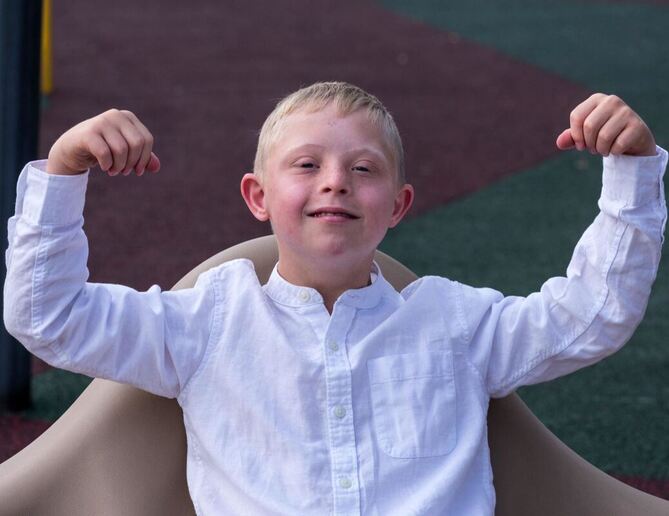What is Down Syndrome
Down syndrome is the most commonly occurring chromosomal abnormality. In the United States there are approximately 350,000 individuals living with Down syndrome. These individuals are active, vital members of their families and communities. A life with Down syndrome is a life well worth living.
It occurs in 1 out of every 733 births and affects people of all races and economic levels.
3 Types of Down Syndrome
|
Trisomy 21 The most common type of Down syndrome, occurs when there are three, rather than two, number 21 chromosomes present in every cell of the body. Instead of the usual 46 chromosomes, a person with Down syndrome has 47. Trisomy 21 accounts for 95% of cases. |
Translocation In translocation, part of chromosome 21 breaks off during cell division and attaches to another chromosome, typically chromosome 14. While the total number of chromosomes in the cells remain 46, the presence of an extra part of chromosome 21 causes the characteristics of Down syndrome. This accounts for 4% of all cases of Down syndrome. |
Mosaic Mosaicism occurs when nondisjunction of chromosome 21 takes place in one – but not all – of the initial cell divisions after fertilization.When this occurs, there is a mixture of two types of cells, some containing the usual 46 chromosomes and others containing 47. Mosaicism accounts for about 1% of all cases of Down syndrome. |
Person First Language
Words can create barriers and reinforce stereotypes.
DSAGT strongly believes in the importance of ensuring that correct language is used when talking or writing about individuals with Down syndrome.
A baby born with Down syndrome is NOT a "Down's child" or a "baby with Downs." When describing an individual with Down syndrome, it is preferred that you say, he/she is a baby with Down syndrome. A person with Down syndrome is NOT a “Downs”. Placing the person before the disability emphasizes the person first and the disability second. When referring to peers, the correct term is “typical” peers as opposed to “normal.”
It is also important to use correct terminology. A person does not “suffer” from Down syndrome, nor are they “afflicted”. It is not a disease. Down syndrome is a chromosomal condition which results in an extra copy of the 21st chromosome. It was discovered by Dr. John Langdon Down however since Dr. Down did not have this syndrome himself, the possessive form is not used. In addition, the ‘s’ in syndrome is not capitalized. Person First language emphasizes respect for the individual.
A person is much more than a label.
Help to educate family, friends and physicians about the preferred way to refer to your loved one with Down syndrome.
DSAGT strongly believes in the importance of ensuring that correct language is used when talking or writing about individuals with Down syndrome.
A baby born with Down syndrome is NOT a "Down's child" or a "baby with Downs." When describing an individual with Down syndrome, it is preferred that you say, he/she is a baby with Down syndrome. A person with Down syndrome is NOT a “Downs”. Placing the person before the disability emphasizes the person first and the disability second. When referring to peers, the correct term is “typical” peers as opposed to “normal.”
It is also important to use correct terminology. A person does not “suffer” from Down syndrome, nor are they “afflicted”. It is not a disease. Down syndrome is a chromosomal condition which results in an extra copy of the 21st chromosome. It was discovered by Dr. John Langdon Down however since Dr. Down did not have this syndrome himself, the possessive form is not used. In addition, the ‘s’ in syndrome is not capitalized. Person First language emphasizes respect for the individual.
A person is much more than a label.
Help to educate family, friends and physicians about the preferred way to refer to your loved one with Down syndrome.

